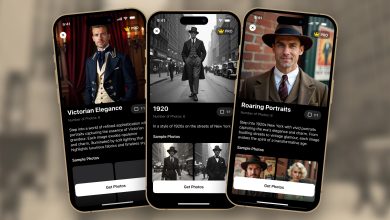
Marketers’ interest in intent data is growing – and for a good reason. By definition, intent data includes any information that could be used to gauge a web user’s intent in investing in a product or solution. As it is behavioural data, it gives businesses a greater understanding of how their target buyers tick – their decision-making process and buying patterns – even before they make a purchase. Based on intent insights, marketers can position and advertise their products more effectively, ultimately driving their target customers to the point of purchase.
Intent data isn’t exactly new. In the B2C world, the majority of marketers extract detail on their consumers’ intent from e-commerce sites. The plethora of data available on these platforms aligns with B2C brands’ reliance on emotion to market their products. It enables marketers to closely monitor consumer behaviour and interpret sentiment towards certain products. But in the B2B world, where old habits die hard and marketing output is more niche in nature, intent data is yet to reach the same level of maturity.
AI could help it get there. Identifying multiple forms of intent is crucial for effective B2B marketing in today’s dynamic brand landscape, as is acting on buyer intelligence for measurable success. But doing this at scale is challenging in the B2B world, requiring intelligent technology and expertise, as well as advocacy from within the business, to drive its development and adoption.
The value of intent data
For B2B marketers, it’s hard to pass up the promise of gaining greater visibility into audiences as they actively look to invest in an expensive business solution. While the application of account-based marketing (ABM) in B2B is increasing and proving effective in identifying, monitoring and targeting potential customers within the lead-generation process, most B2B marketers are just scratching the surface of what’s possible with their ABM strategy.
Intent data enhances ABM with more granular takeaways around an individual’s professional profile and buying journey. It goes beyond ABM’s standard offer of identifying target audiences purely by vertical and company, which can result in a broad audience pool that lacks focus and direction. Instead, it offers insights into a target’s level of engagement with relevant online material and marketing collateral.
Furthermore, intent data can help solve the issue of defining and prioritising target buyers, overcoming challenges related to the complexity of B2B audiences in terms of their varying budgets, technical expertise, and purchasing power.
Progressing intent data with AI
AI’s growing role in finding the right audience based on intent data can’t be ignored. Just capturing the data that indicates a user’s (and, if using the right data, also a company’s) intent is a task already complicated enough if there’s no AI involved. But computing the level and the detailed category of intent is something one can’t do completely without AI if serious business volume is to be achieved. While the volume of B2B data is usually smaller in comparison to B2C data – less relevant users, fewer products for sale – it’s also more complex. There are more decisions to be made before buying a single product, longer sales cycles mainly based on fact and function, and many insights buried beneath the surface.
In our industry, AI’s biggest strength is predicting and influencing outcomes based on targets, data and training. The more data, the better the AI can predict. Big data has been a buzzword for many years, but the evolution of AI finally offers ways to use the high volumes of data that make it “big”. A prospect’s buying process has many steps – like information, research, evaluation, comparison, decision – which are all relevant to understanding buying intent. Even with the smaller scale of behavioural data we see in B2B, this provides enough data points for AI to analyse, predict and decide, while far too many data points for us humans to process manually.
If more data leads to better predictions, these then allow better personalization. This is what makes AI-driven intent marketing so useful; it lets B2B marketers target potential buyers with the right content, in the right place, at the right time. By personalising ABM campaigns to each buyer’s unique decision-making process, AI-driven intent data gives B2B businesses a competitive edge as they cut through digital and brand clutter. In today’s marketing environment, this is essential.
Driving its development and adoption
According to Demand Gen Report, B2B businesses are keen to go beyond basic demographic and firmographic data in order to collect deeper intelligence on prospective buyers, with 62% looking to incorporate intent insights into their processes. But while awareness and demand is certainly growing, many B2B marketers are struggling with how to integrate AI-driven intent.
Going against the grain and trialling something different from their existing technology and traditional marketing practices is uncommon for B2B businesses. Where high-value transactions tend to put more at stake – both from a cost and customer relationship perspective – many B2B businesses are hesitant to take operational leaps.
This applies to the adoption of intent data, which is often overlooked by B2B marketers largely due to a lack of awareness. Plus, many businesses lack an understanding of where to find intent data, how to incorporate it into marketing strategies, and the tools or companies that can help them leverage it effectively.
However, by consulting an experienced data partner and building successful use cases that illustrate intent data’s impact and performance, it becomes easier to convince senior business decision-makers to integrate intent data solutions across the marketing function. This type of dialogue and evidence is essential in driving its development and adoption.
To build a strong intent data use case, B2B marketers need to first define their audience personas, keywords, and pain points, so they can accurately capture intent data from the start. By determining the specific details to track and which products to market, B2B marketers can get the most out of the data they collect and maximise their budget. In the long-term, this will ensure potential customers are targeted with relevant content and have a positive impact on brand reputation.
It’s becoming increasingly clear that B2B marketers need to play their part in helping AI-driven intent data usage flourish – from determining target groups, to educating senior decision-makers about its use. This is essential in allowing intent data to become a powerful vehicle in empowering B2B marketers and their campaigns, in turn transforming marketing as we know it.





